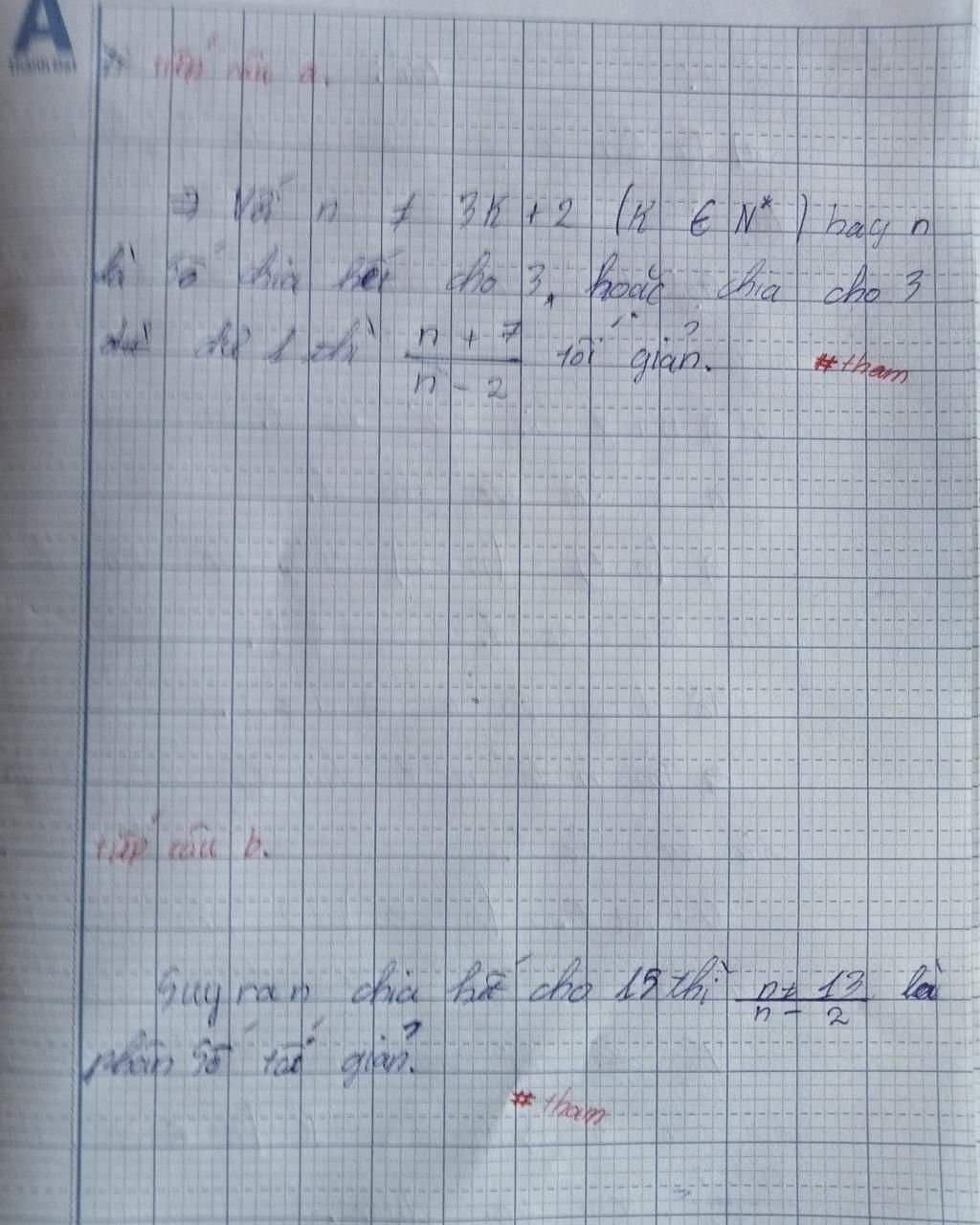Tìm n để các phân số sau là phân số tối giản a) n+7n−2 b) n+13n−2
2 câu trả lời
a)Giả sử n+7 và n-2 cùng chia hết cho 1 số nguyên tố d
Ta có:
{n+7⋮dn−2⋮d
⇒(n+7)-(n-2)⋮d
⇒n+7-n+2⋮d
⇒9⋮d
⇒d∈Ư(9)
⇒d∈{1;3;9}
Vì d là số nguyên tố⇒d=3
Để n+7n−2 là phân số tối giản⇒3∉ƯC(n+7;n-2)
⇒{n+7⋮̸
\text{Do n+7=n-2+9$\Rightarrow$n-2 $\not\vdots$3$\Rightarrow$n-2$\ne$3k$\Rightarrow$n$\ne$3k+2}
\text{Vậy n$\ne$3k+2 thì phân số $\frac{n+7}{n-2}$ là phân số tối giản.}
\text{b)Tương tự}
Câu hỏi trong lớp
Xem thêm




